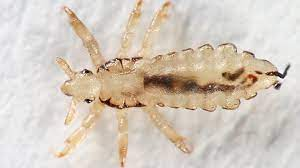Head lice, Pediculus humanus capitis, are tiny parasitic insects that live in hair. They can cause infestation of the scalp known as Pediculosis capitis.
Head lice hatch from eggs and the sacs left behind are known as ‘nits’ which attach firmly to the hair shaft. Nits are more visible to the naked eye than live lice.
